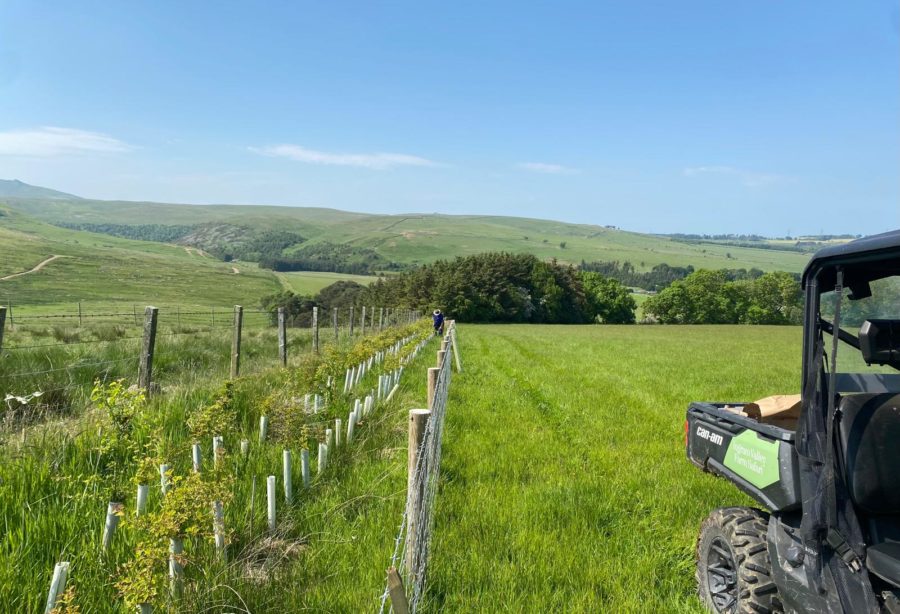A Controversial Topic
Three years ago, The Guardian published a bold article arguing that it was better to lose a percentage of tree saplings than to protect them with plastic tree guards. The argument, though provocative, was backed by emerging data: the carbon emissions from using plastic shelters were negligible compared to the carbon a successful sapling would sequester over 25 years. The article also highlighted a major environmental concern—tree shelters are often left behind after their five-year lifespan, breaking down into microplastics that pollute waterways and soils, ultimately doing more harm than good.
The authors concluded that decisions around using plastic tree guards should weigh broader environmental factors, such as the local herbivore pressure and the likelihood that landowners will retrieve the guards after use. In areas where collection is unlikely, they argued, planting without shelters results in lower carbon emissions and reduces the risk of further environmental degradation.
Three Years Later…
Since then, the conversation around tree guards has shifted—not towards abandoning them, but transforming them. Manufacturers have moved away from single-use plastics, developing more sustainable alternatives to meet the ongoing need for sapling protection. Tree guards remain essential in shielding young trees from herbivores and creating microclimates that accelerate growth, making them critical tools in reforestation. This is particularly important as reforestation has become central to the UK’s strategy for reaching net zero carbon emissions by 2050. Achieving this target requires increasing woodland coverage from 13% to 19%, which requires the planting of 1.5 billion trees -around 30,000 hectares – each year. Meeting this scale of planting without relying on plastic shelters has now seen the rise of more sustainable guard solutions entering the market.
Tree Guards at Ingram Farm
Currently the guards at Ingram Valley Farm are either corrugated light green Polypropylene or mesh, made from High-Density Polyethylene (HDPE). These guards having served their 5-year establishment period are now in the process of being removed by volunteers and recycled via the Tubex recycling scheme. Removing these guards is a labour-intensive process which tends to occur in a short time frame. This means relying on the amazing Ed Woodhead from Newcastle University and his dedicated group of volunteers – Ingram Valley Safaris – Removal of Tree Shelters. Removal of the shelters typically occurs between the end of breeding Wader season and when the Curlews have fledged and before the further plantation of trees in autumn.
When the tree guards reach the recycling centre, they are shredded and washed. The material is then re-pelletised and reused to make new tree shelters! All tubex products for purchase are made with 50% recycled content, as the company moves closer to achieving a fully circular economy.
Since some of the trees on the farm require bigger guards, they use spiral shelters made from Polyvinyl Chloride (PVC), which cannot currently be recycled. So currently Ingram Farm is re-utilising these shelters as “sky-rises” for ants, providing a safe home for invertebrate communities.
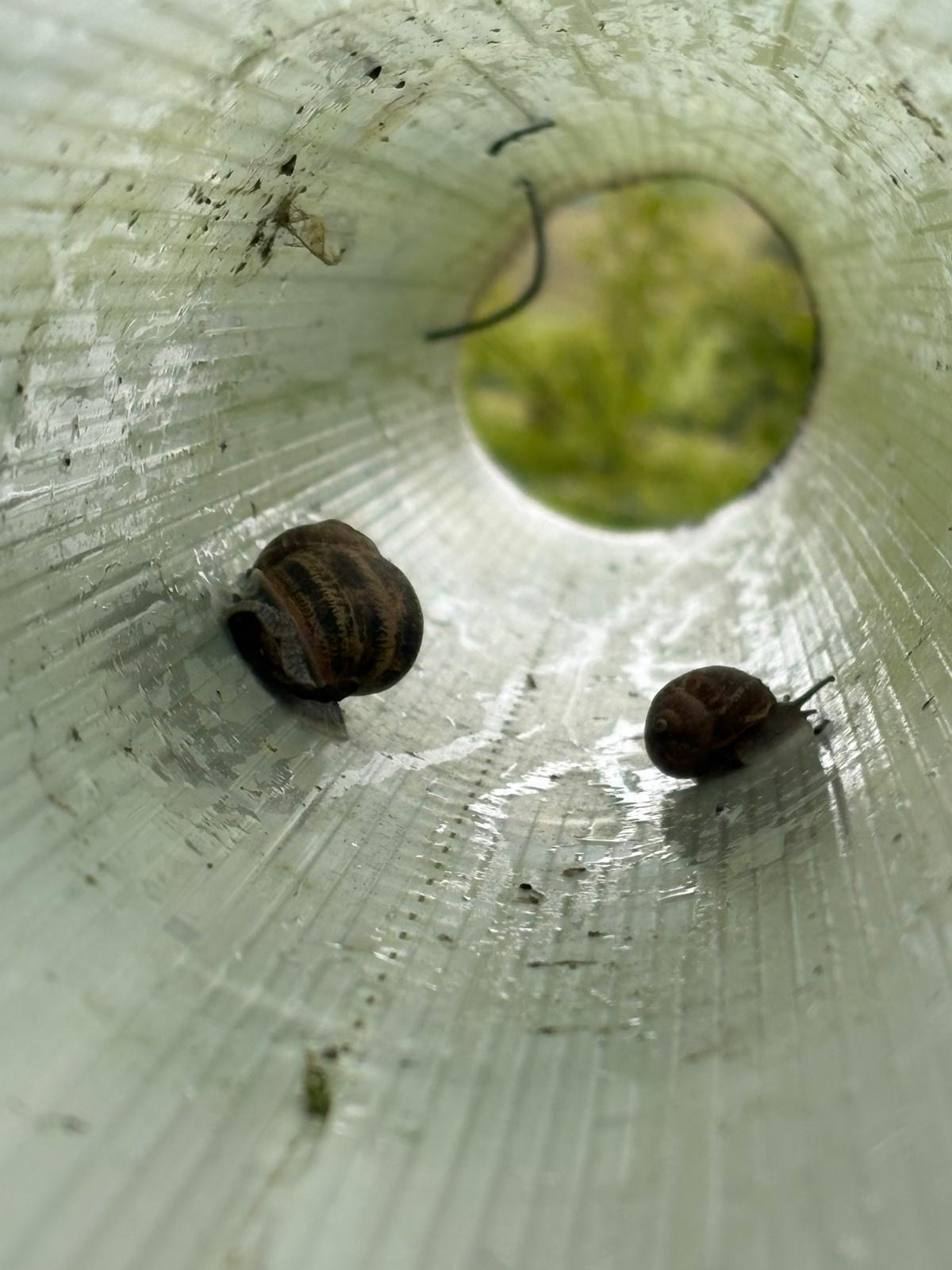
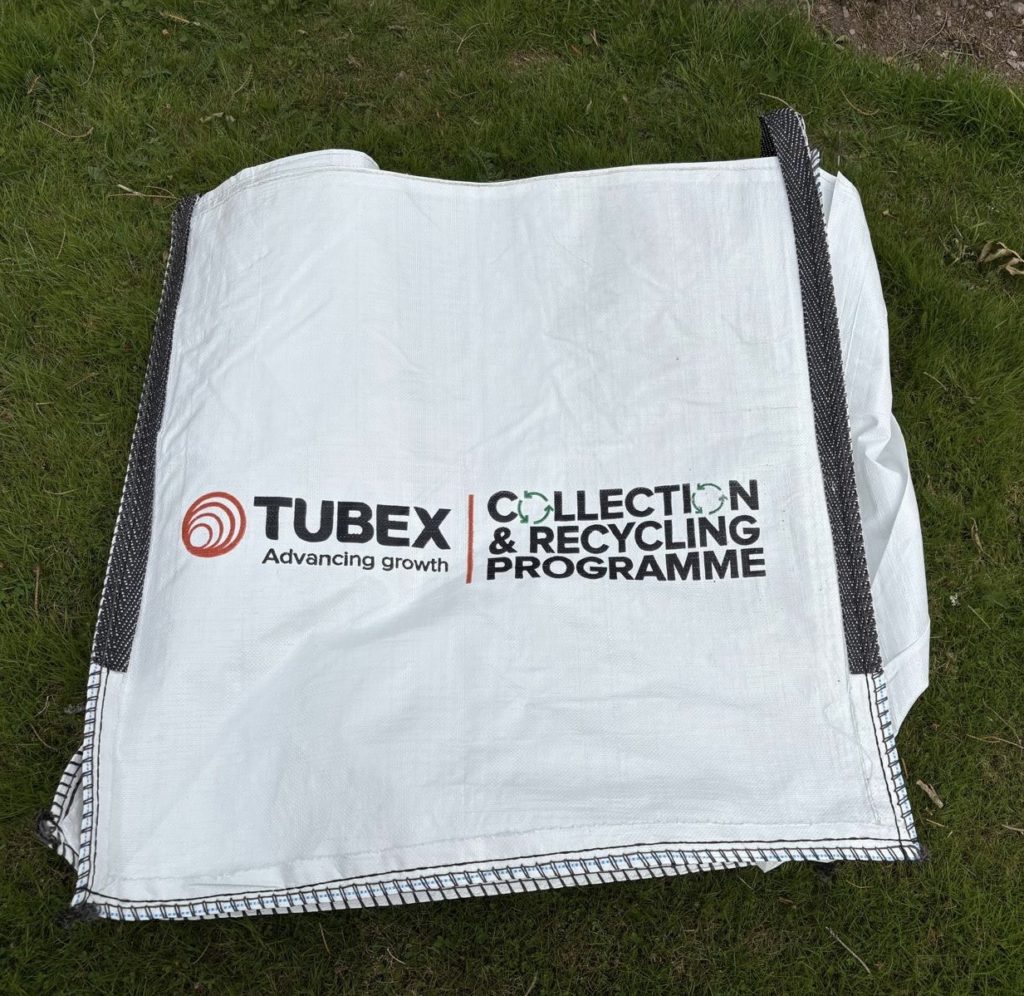
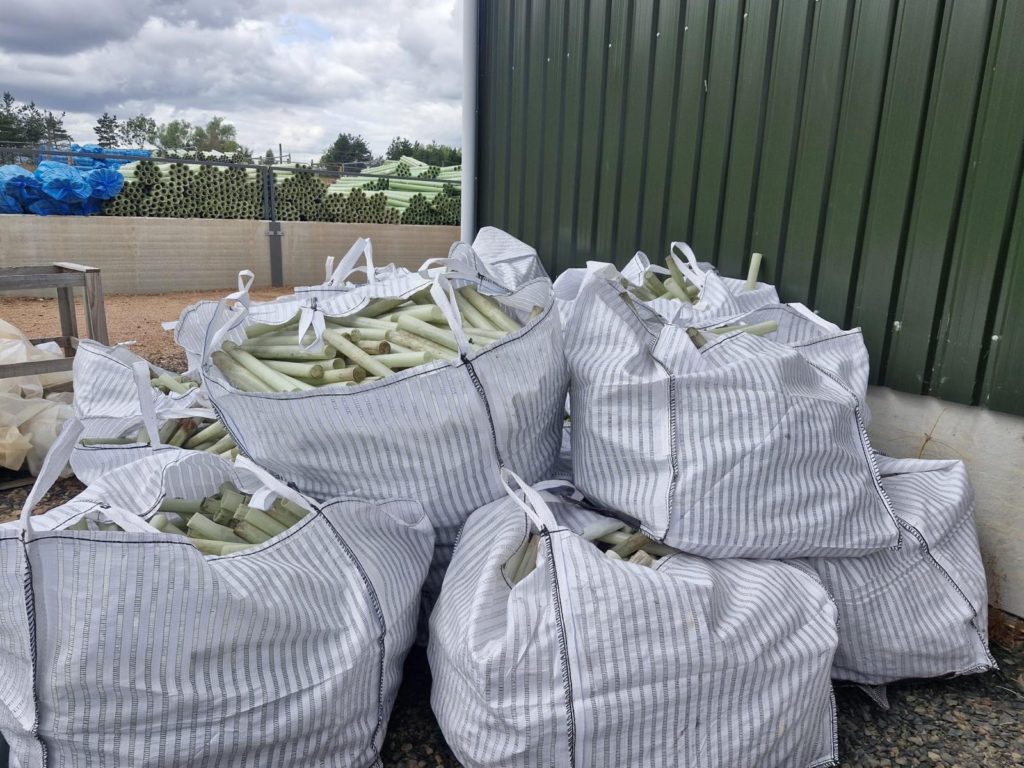
Our Transition to Sustainable Shelters
So the search for a sustainable alternative to plastic tree guards is currently a competitive and fast-moving market. New products are being closely evaluated for their environmental impact across their “cradle to grave” credentials, with a large focus on carbon footprint and end-of-life outcomes. Yet only a handful of options currently on the market offer a genuinely responsible circular solution: tree guards that are compostable, biodegradable, and still provide effective protection for saplings over the crucial five-year growth period. To keep up to date with all this innovative progress, one of our favourite podcasts to listen to is The Sustainabilitree Podcast !
So here at Ingram Farm, we are committed to ending single-use plastic shelters by trialling new products and working in collaboration with the “Plastic Free Woodlands Project” . To do this we are trialling a range of new alternatives on the market: made from plant-based materials such as sugarcane, corn, and starch, which are designed to biodegrade naturally into water, carbon dioxide, or biomass within a few years. Some guards follow the traditional cylindrical form, while others use flexible wraps that expand with the tree’s growth, removing the need for later collection. Other designs incorporate starch-based plastics that require 65% less energy to produce than conventional plastics, or bio-based polyethylene made from sugarcane waste, which can be fully recycled. There are also options made from waterproof cardboard, offering a recyclable and compostable solution for tree protection.
Ultimately, the question now is not whether to use tree guards; but whether we can innovate fast enough to protect our trees, without leaving a legacy of pollution in the very landscapes we’re trying to restore. The following tree guards are on trial at Ingram Farm as we transition away from plastic shelters.
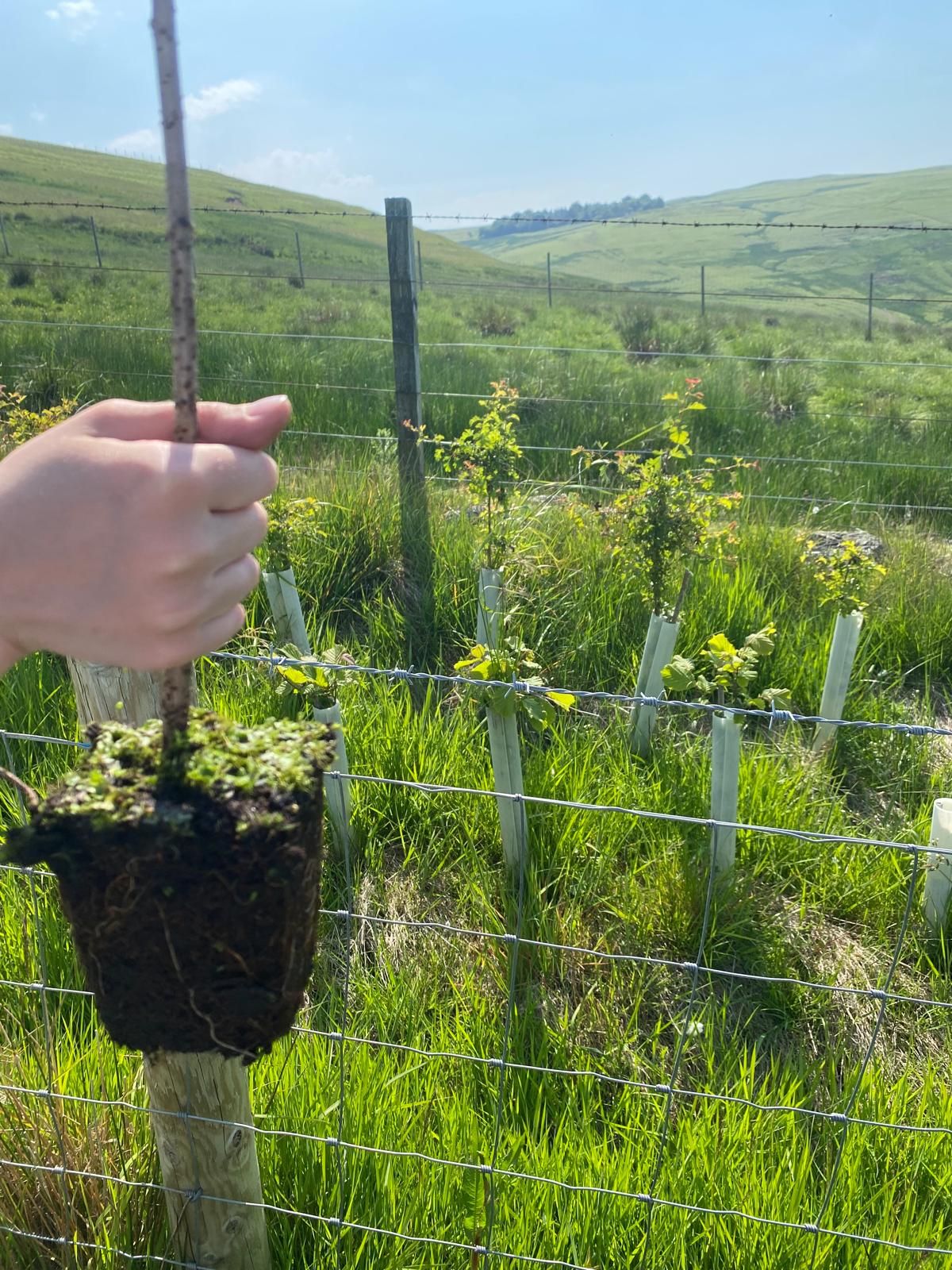
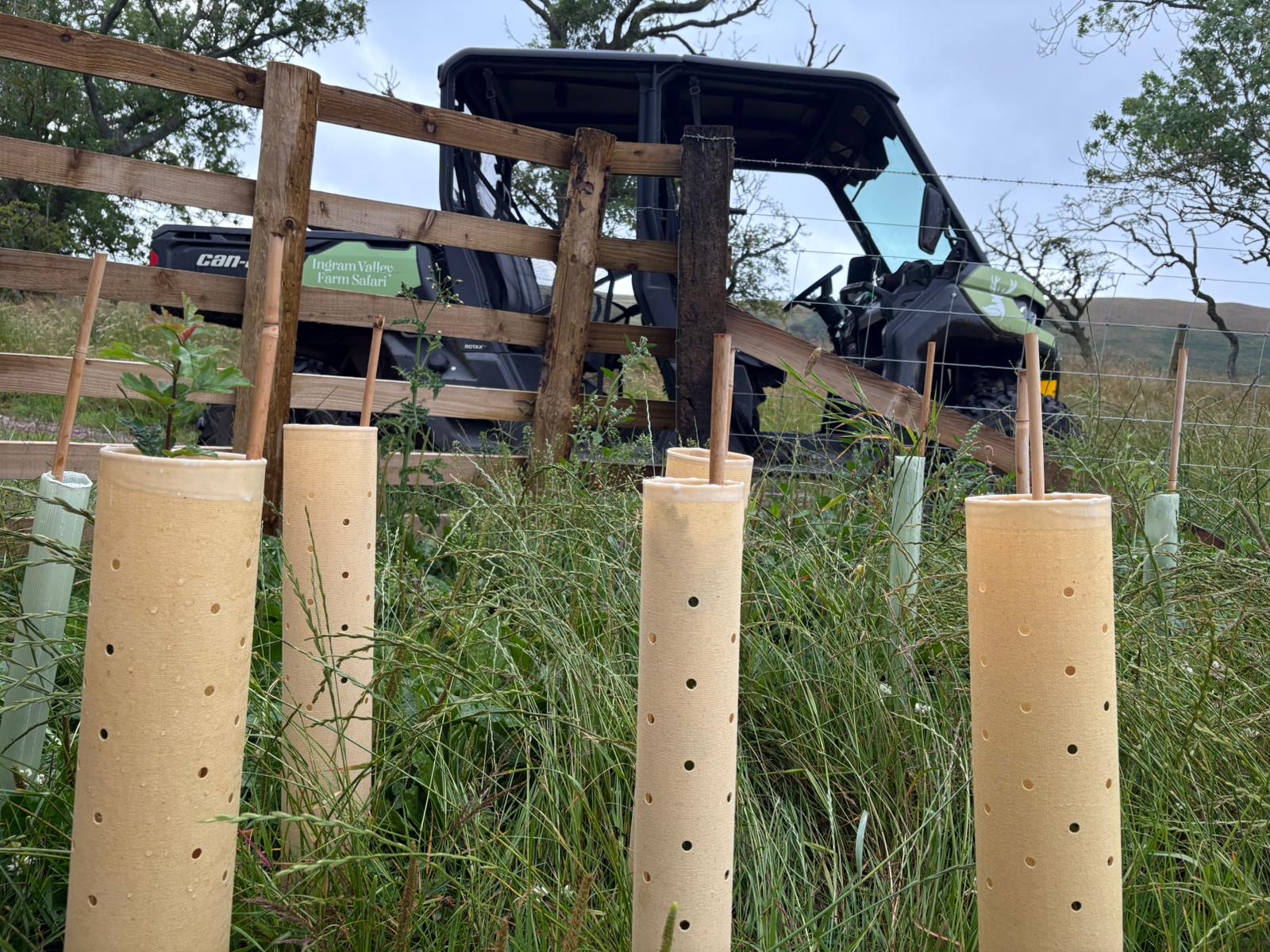

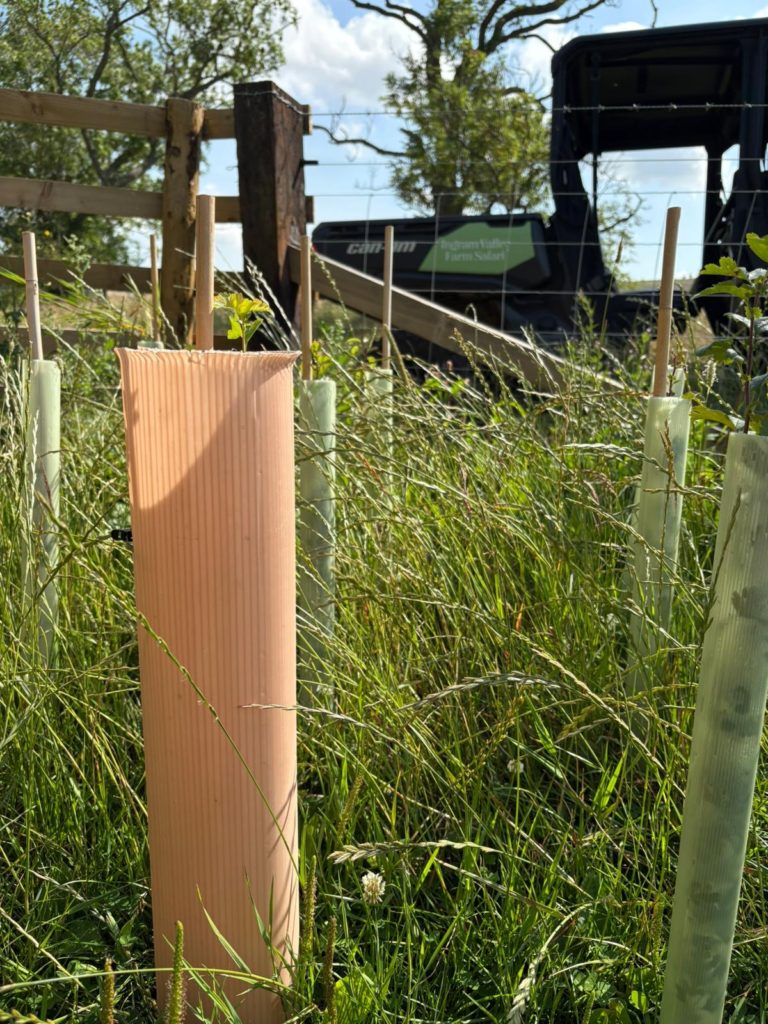
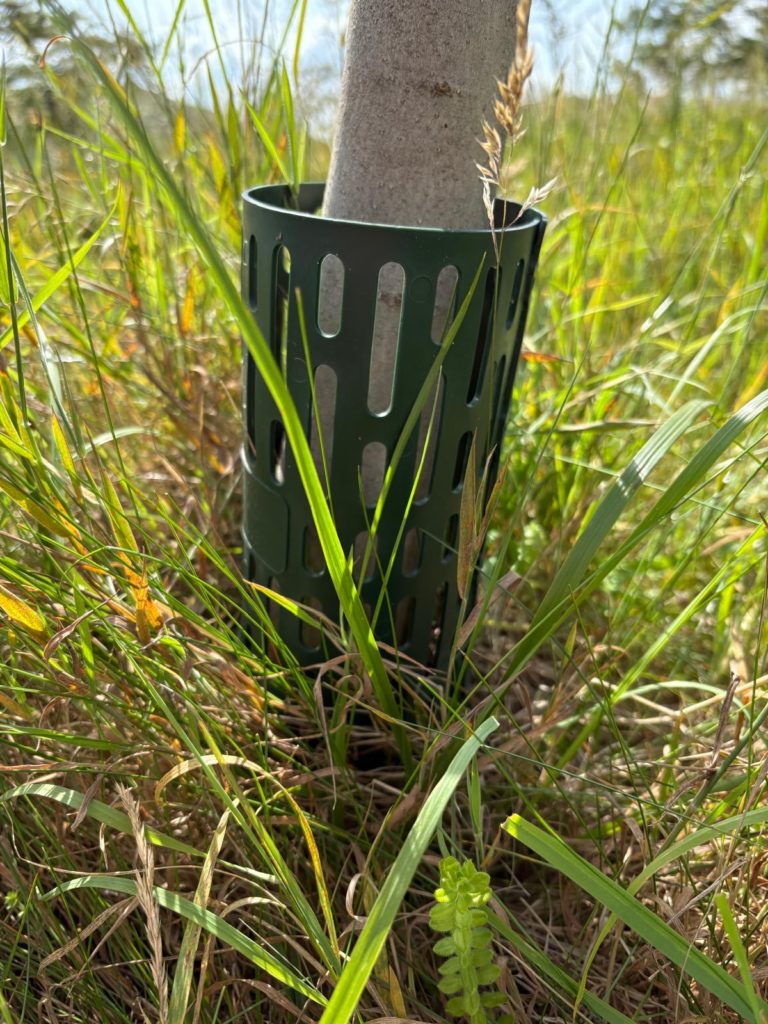
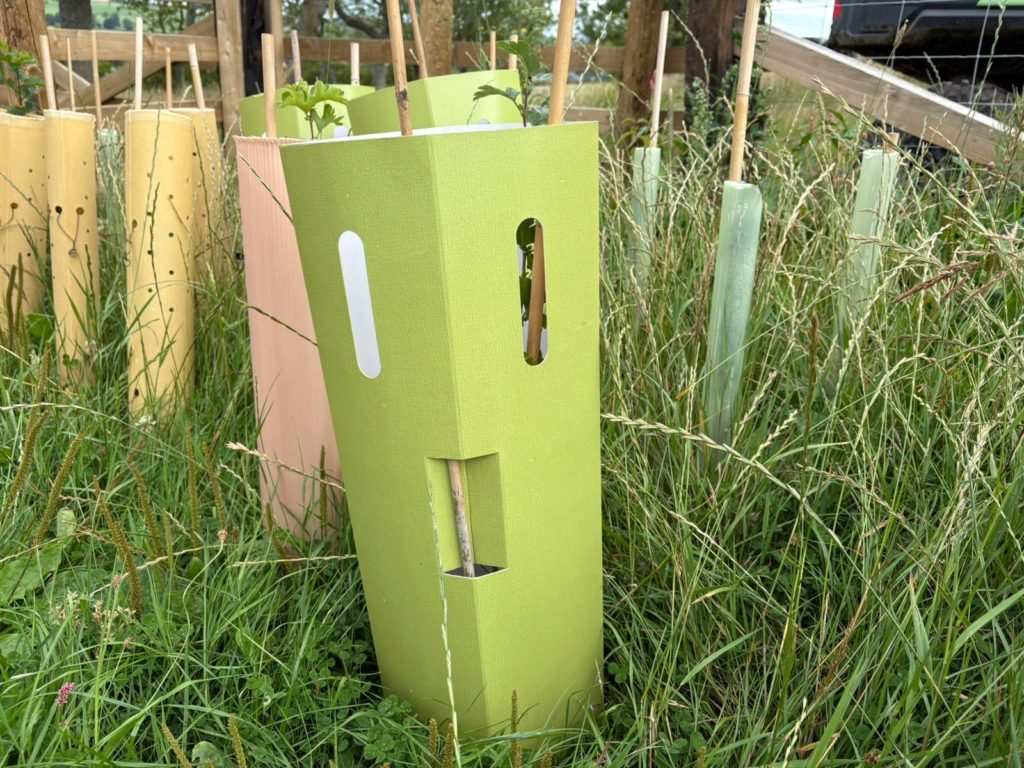
Get Involved
Have you spotted plastic tree guards in a hedgerows, woodlands, parks, or by the roadside this summer? If so you can help turn these sightings into action, by joining a major citizen science project, “plot that plastic” with the Forest Plastics Working Group.
Your contributions will help to build a nationwide map of plastic shelters, ensuring these polluting remnants aren’t left to harm our ecosystems. The final map will then guide where volunteer groups need to go to remove the guards and inform the government of where new recycling hubs should be placed across the UK.
Be part of the movement to make the British countryside plastic-free — get involved today!

